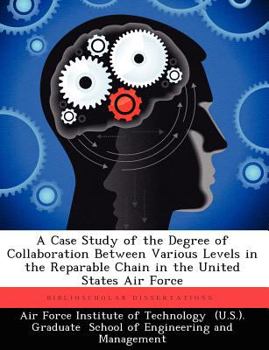A Case Study of the Degree of Collaboration Between Various Levels in the Reparable Chain in the United States Air Force
Collaborative Planning, Forecasting, and Replenishment and other logistics processes were developed in the commercial sector to reduce total system costs of production while simultaneously providing reduction in inventory levels, improved customer service levels, greater flexibility in scheduling, greater velocity of inventory through the pipeline, and, as a result, greater profitability (Ploos van Amstel, 1990:1). Many companies including Wal*Mart, Motorola, Target, Johnson and Johnson, and Kellogg's, just to name a few, have seen great achievements since implementing CPFR processes. Can these processes be applied to the Air Force supply chain? This thesis intends to examine the flows and relationships to identify opportunities Air Combat Command Regional Supply Squadron (ACCRSS), Depot Repair Facilities, and Operational Bases. This research will use a case study approach to address the research and investigative questions. Air Force supply chain management has many responsibilities that must be accomplished. This thesis will seek to look at many of the variables but does not promise to cover all aspects or attempt to provide the ultimate solution. It will merely present the literature reviewed and the data collected and try to draw a conclusion as to whether civilian CPFR techniques can be applied to current Air Force supply chain practices.
This work has been selected by scholars as being culturally important, and is part of the knowledge base of civilization as we know it. This work was reproduced from the original artifact, and remains as true to the original work as possible. Therefore, you will see the original copyright references, library stamps (as most of these works have been housed in our most important libraries around the world), and other notations in the work.
This work is in the public domain in the United States of America, and possibly other nations. Within the United States, you may freely copy and distribute this work, as no entity (individual or corporate) has a copyright on the body of the work.
As a reproduction of a historical artifact, this work may contain missing or blurred pages, poor pictures, errant marks, etc. Scholars believe, and we concur, that this work is important enough to be preserved, reproduced, and made generally available to the public. We appreciate your support of the preservation process, and thank you for being an important part of keeping this knowledge alive and relevant.





